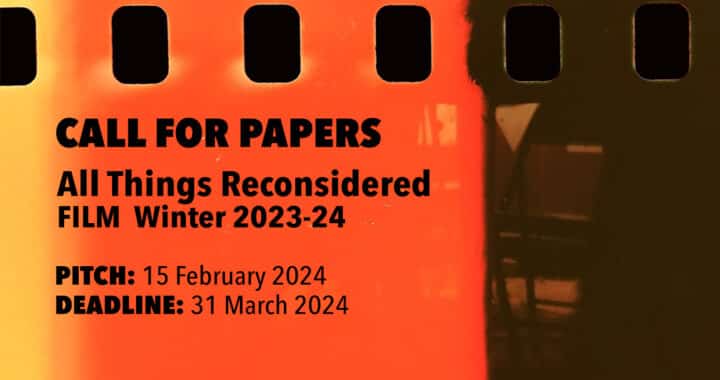Though it is not a perfect film, Ridley Scott‘s Thelma & Louise has perfect moments. When the film was released in 1991, it was hailed as something new: a road movie for women, one in which the gals drink, curse, have sex, and rob banks like the outlaws they become. Thelma & Louise was surprising, fresh, and poignant twenty years ago. For a new generation of viewers, the film is still relevant, largely due to the timeless performances of its stars, Geena Davis (Thelma) and Susan Sarandon (Louise).
For the uninitiated, Thelma & Louise begins with two women leaving their small Arkansas town for a weekend in the mountains. En route, they stop at a honky tonk roadhouse for margaritas, line dancing, and a fatal run-in with Thelma’s would-be rapist, Harlan (Timothy Carhart). Louise shoots and kills Harlan (after Thelma is out of harm’s way) and decides not to go to the police. Thelma and Louise find themselves cast as reluctant but remarkably capable fugitives on the run from the law (personified in nice-guy cop Hal Slocumb, played by Harvey Keitel).
Like many great American films, Thelma & Louise is set in wide-open spaces populated with sagebrush and colored with the red canyons of the southwest. Scott and cinematographer Adrian Biddle use the lonely two-lane highways, vintage gas stations, and desert landscape as the so-pretty-it’s-distracting backdrop to this epic road adventure. Thelma & Louise is like a latter-day fairytale, one in which the West is still untamed, and it’s possible to hightail it south of the border and meet devastatingly handsome hitchhikers along the way. (Brad Pitt in an early role as the best-looking drifter you ever saw.)
The Blu-Ray cut of Thelma & Louise is gorgeous, showcasing Sarandon, Davis, and the landscape in warm, sun-baked light. Indeed, the women become much more beautiful and rugged as the story progresses—their inner transformations are mirrored by dusty, freckled faces devoid of makeup. They become endowed with steely, self-assured demeanor, like when they blasély blow up a misogynistic trucker’s rig or knock back a bottle of bourbon while speeding along in their T-Bird at 110mph. Wearing torn faded denim and dirty white shirts, they are Amazons of the open road.
The flip side of sharp, high-definition Blu-Ray is that everything is more obvious, including flaws. Scott chooses to include rain in several scenes when the police are tracking the women from Arkansas. The rain is embarrassingly fake—it’s movie studio rain, falling in densely improbable sheets while the sun shines further down the street, not 30 yards away. When Thelma and Louise drive through Arches National Park in Utah at night, the towering rock edifices are lit as though by spotlights, which they probably really were. It’s a gorgeous sequence, and one can understand the temptation to highlight the rocks, but it takes us out of the story and reminds us that this is just a movie.
Still, Scott deserves credit for handling the material well overall. He brings tension and suspense to the story – this is Ridley Scott, after all. So expect killer action scenes. Thelma and Louise’s final run from the police, in particular, is frantic and exhilarating.
Callie Khouri’s groundbreaking script is an ideal foil for Davis and Sarandon, perfectly paired as very different women who are best friends. While some of the major events in the story can feel implausible (Thelma and Louise decide not to go to the police after shooting Harlan, all within the space of ten minutes? Seriously?), the dialogue between the actors seems genuine. Thelma “I know it’s crazy, but I just feel like I got a knack for this shit.” Louise: “I believe you do.”
The performances of, and more importantly, the chemistry between Sarandon and Davis is the main reason Thelma & Louise is so emotionally gripping and memorable. From the moment Thelma heaves her bulging floral suitcase into the trunk of Louise’s turquoise 1966 Thunderbird, their deep bond is apparent. They’ve known each other forever, and each is brave enough to take off like a desperado, but not without the other.
In the years since Thelma & Louise was released, Sarandon has remained the more successful and talented actor of the two. It’s Louise that I’ve always wanted to be like: independent, sassy, and whip-smart. But Thelma & Louise is Davis’ (and Thelma’s) movie. It’s Thelma who undergoes the more drastic metamorphosis from ditzy, demure housewife (“You want anything special for dinner?”) to sharp-shootin’ smooth talkin’ criminal (“I’ve had it up to my ass with sedate”).
Davis captures our attention partly due to Thelma’s arc, which is more dramatic than Louise’s. Meek and unsure in the beginning, Thelma has further to go. But Davis makes this whirlwind transformation grounded and genuine, even when it’s surprising. Somehow, we believe that this despondent housewife blossoms into a cowgirl-like criminal holding up convenience stores in less than 72 hours. It’s Thelma who ends their story with a crazy suggestion, a spur-of-the-moment suicide pact that somehow makes sense, even to those of us on the other side of the screen.
The Blu-Ray edition of the film is a rich transfer and has none of the weird sound-synching issues other Blu-Rays have been prone to. Brad Pitt looks even sexier in HD than he did in 1991 if that’s possible. Special features include a commentary with Scott and a separate commentary with Sarandon, Davis, and Khouri. An included making-of-featurette has modern-day interviews with the actors Scott and Khouri. There’s nothing new here, but it’s an interesting retrospective.

![Call for Papers: All Things Reconsidered [MUSIC] May-August 2024](https://www.popmatters.com/wp-content/uploads/2024/04/all-things-reconsidered-call-music-may-2024-720x380.jpg)



